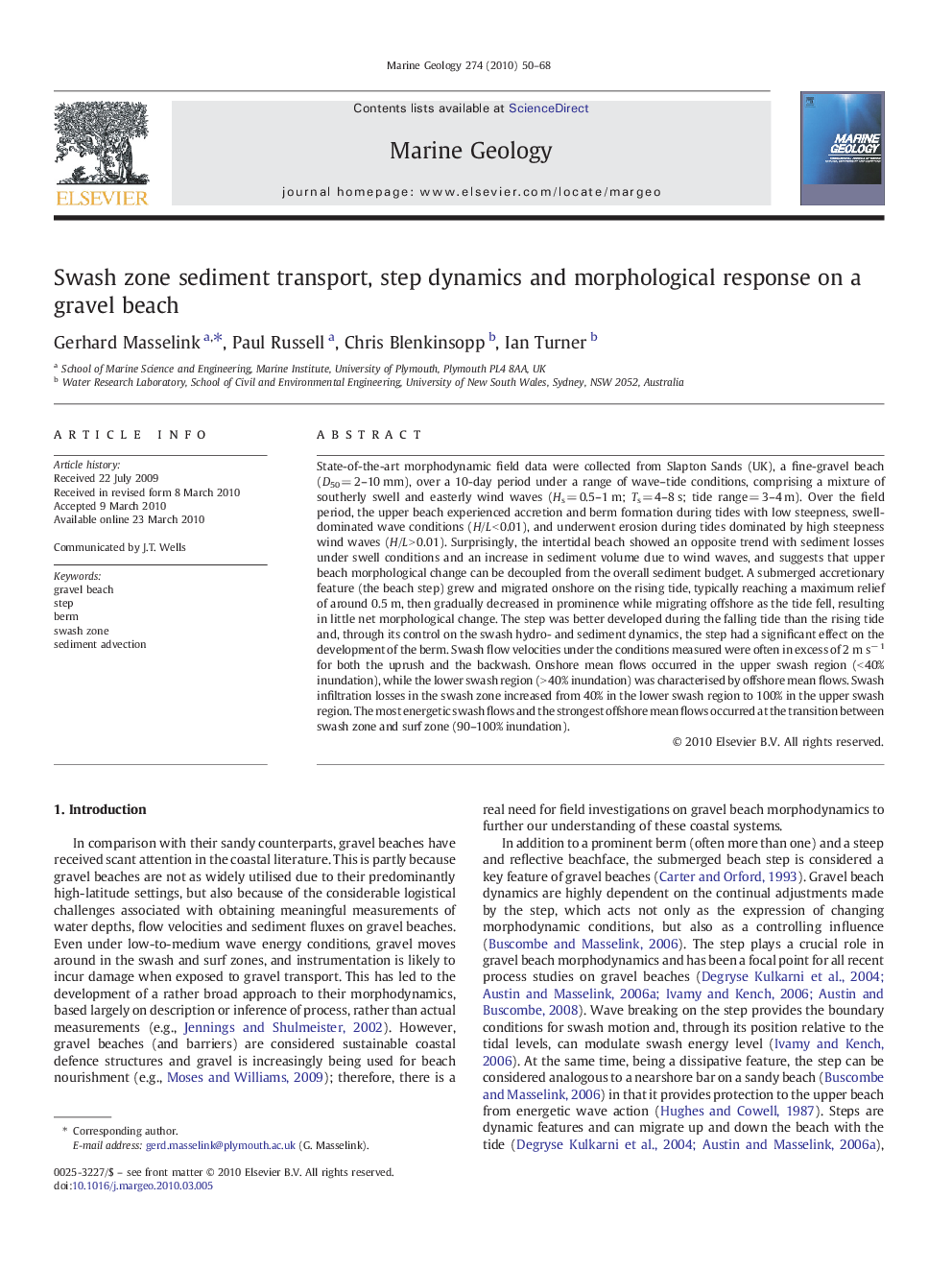| کد مقاله | کد نشریه | سال انتشار | مقاله انگلیسی | نسخه تمام متن |
|---|---|---|---|---|
| 4718926 | 1639147 | 2010 | 19 صفحه PDF | دانلود رایگان |
عنوان انگلیسی مقاله ISI
Swash zone sediment transport, step dynamics and morphological response on a gravel beach
دانلود مقاله + سفارش ترجمه
دانلود مقاله ISI انگلیسی
رایگان برای ایرانیان
موضوعات مرتبط
مهندسی و علوم پایه
علوم زمین و سیارات
ژئوشیمی و پترولوژی
پیش نمایش صفحه اول مقاله

چکیده انگلیسی
State-of-the-art morphodynamic field data were collected from Slapton Sands (UK), a fine-gravel beach (D50 = 2-10 mm), over a 10-day period under a range of wave-tide conditions, comprising a mixture of southerly swell and easterly wind waves (Hs = 0.5-1 m; Ts = 4-8 s; tide range = 3-4 m). Over the field period, the upper beach experienced accretion and berm formation during tides with low steepness, swell-dominated wave conditions (H/L < 0.01), and underwent erosion during tides dominated by high steepness wind waves (H/L > 0.01). Surprisingly, the intertidal beach showed an opposite trend with sediment losses under swell conditions and an increase in sediment volume due to wind waves, and suggests that upper beach morphological change can be decoupled from the overall sediment budget. A submerged accretionary feature (the beach step) grew and migrated onshore on the rising tide, typically reaching a maximum relief of around 0.5 m, then gradually decreased in prominence while migrating offshore as the tide fell, resulting in little net morphological change. The step was better developed during the falling tide than the rising tide and, through its control on the swash hydro- and sediment dynamics, the step had a significant effect on the development of the berm. Swash flow velocities under the conditions measured were often in excess of 2 m sâ 1 for both the uprush and the backwash. Onshore mean flows occurred in the upper swash region (< 40% inundation), while the lower swash region (> 40% inundation) was characterised by offshore mean flows. Swash infiltration losses in the swash zone increased from 40% in the lower swash region to 100% in the upper swash region. The most energetic swash flows and the strongest offshore mean flows occurred at the transition between swash zone and surf zone (90-100% inundation).
ناشر
Database: Elsevier - ScienceDirect (ساینس دایرکت)
Journal: Marine Geology - Volume 274, Issues 1â4, 15 August 2010, Pages 50-68
Journal: Marine Geology - Volume 274, Issues 1â4, 15 August 2010, Pages 50-68
نویسندگان
Gerhard Masselink, Paul Russell, Chris Blenkinsopp, Ian Turner,